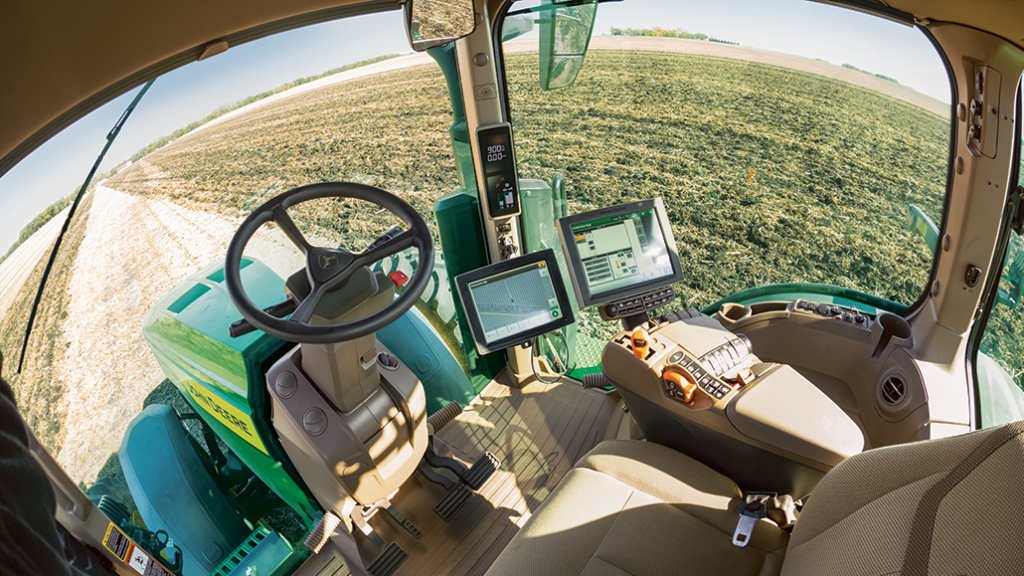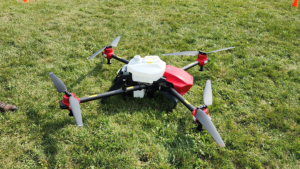Autonomous equipment roundup
WHAT'S NEW – AND WHAT DO FARMERS THINK?

AUTONOMY AND ARTIFICIAL intelligence (AI) are advancing in leaps and bounds, and farm machinery manufacturers of all sizes are trying to seize the opportunity.
However, approaches differ, bringing different capabilities and physical characteristics to stand-alone machines and retrofit solutions.
JOHN DEERE INVESTING IN AUTONOMY
John Deere continues to draw attention for its evolving line of autonomous machines, including the 8R tractor series, released earlier in 2022.
Graham Burton, integrated solutions manager for Premier Equipment, says the traditional cabbed tractor design of the autonomous 8R line is an attractive feature since it allows for manual and driverless operation.
“Autonomy is essentially a feature. We can still drive it to the field, which is great from a liability standpoint,” he says, adding the machine could prove particularly valuable to custom farm service providers and potentially those with limited labour resources.
Burton believes the 8R series and other similar autonomously-capable designs have potential in the Ontario marketplace. However, continued field demonstrations will be important since the tasks which the 8R could practically complete will be implement-specific (John Deere originally released the 8R with a focus on tillage). Implement technology and tractor technology, that is, are both at play, and Burton says systems on both should complement each other to ensure the effective detection of obstacles, for example.
The 8R series is far from the only autonomous, AI-focused initiative from John Deere. Indeed, the company has stated it wants to bring autonomy to the broader agriculture sector as soon as possible via tractor retrofit kits — in addition to its separate tractor lines, which are autonomous out-of-the-box. To achieve this goal more quickly, John Deere acquired California-based ag-tech company Bear Flag Robotics for $250 million USD in 2021.
Other major farm equipment manufacturers have also pursued autonomous designs, including New Holland’s NH — a design similar to the green 8R series — and the cabless Case IH autonomous tractor, both released in 2016. Regarding the latter, mixed reviews about cabless designs contributed to a later decision to re-incorporate an operator cab.
Case IH and Raven Industries recently partnered to develop an autonomous spreader. The Case IH Trident 5550 applicator was unveiled at Farm Progress Show 2022, being marketed as another answer to labour challenges and the need for higher productivity. A joint press release from the companies describes the machine as combining “proven driverless technology with an agronomically designed spreading platform for a flexible autonomous solution.”
From a mobile device, reads the press release, operators can “plan and complete an entire field operation based on mapped field boundaries. The Raven Autonomy perception system, through a series of advanced cameras and radar system, is constantly sensing a 360-degree environment around the machine for obstacles and motion initiation while operating. With artificial intelligence, Raven’s perception controller processes the continuous stream of images, which interprets and detects obstacles.”
RAVEN, NEXAT, AND OTHERS
Raven’s driverless, multi-implement compatible OMNiPOWER platform (once known as Dot) has received significant attention in recent years.
The first one in Ontario arrived at Bothwell-area elevator and ag-service provider Haggerty Creek Ltd. in the spring of 2020 and has since been tested, augmented, and refined through cooperation with the manufacturer. Raven incorporated improvements into a second-generation design — the OMNiPOWER 3200, released in spring 2022 — including more powerful engines and hydraulic systems for better operational speed and ground contact and a more serviceable design for in-field repairs.
Raven, too, has invested in bolt-on autonomy systems in addition to stand-alone machines. The company’s OMNiDRIVE harvest application allows combine operators to control and operate an autonomous grain cart tractor, removing the necessity of having a second driver.
Many other companies are making inroads in the large autonomous machinery space. German ag-tech developer NEXAT is one, with its all-in-one autonomous platform designed to address compaction, labour, and various other crop production issues.
The system is a gantry-style design — a wide implement area bookended by wheels or tracks — following a multi-implement capability similar to the OMNiPOWER platform. However, the NEXAT design retains an operating cab. It has drawn a lot of attention in Europe — particularly for large-scale operational trials in Ukraine. However, the company has shifted to North American trials due to the ongoing war.
MIXED RECEPTION TO AUTONOMY
These technologies are just a selection of higher-profile examples in a rapidly changing market. Innumerable smaller companies are also entering the fray, with designs ranging from very small and multi-purpose to large and task-specific.
For Ian Siertsema, technology solutions manager for Roberts Farm Equipment, advances in guidance capability appear to be an ongoing focus for a wide swath of equipment manufacturers, citing Raven (and its parent company CNH Industrial), as a notable example.
“All manufacturers are leaning more and more towards fleet management, or managing from afar. Everyone has offerings. There are new things coming all the time,” he says, though he adds there are also significant and comparatively under-the-radar advances in non-guidance-related areas. Ensuring people are aware of what tools are available and how to integrate them into their operations is the challenge.
Regarding the openness of farmers to autonomous tools and machines, his experience highlights a predictable range — some are keen to try the latest advances, while others want to wait until the tool in question has proven itself.
“It all comes with a cost, of course, but I think I probably tend to agree there can [be apprehension]. Until they get using it, they don’t necessarily see some of the benefits,” says Siertsema.
“It’s kind of back to when auto guidance became more mainstream. Some of the people using it would have a hard time going back now. Sometimes it takes a bit of time to work and see some of those new benefits. With the labour situation the way it is, I think some of this tech will be adopted more quickly.”
MADE-IN-ONTARIO AUTONOMY SOLUTIONS
Many new systems are designed and produced outside of Ontario, particularly by smaller ag-tech developers. What’s more, some of those developers do not have a deep background in agricultural production, either academically or from direct field experience, adding another layer of apprehension for some growers. In particular, Ontario’s growing conditions and crop production can be vastly different from other geographies — California, for example.
Ensuring new systems are effective in Ontario’s growing conditions spurred the creation of an Ontario-specific agricultural autonomous working group. The collaboration involves a wide range of technology developers, researchers, extension specialists, farmers, and agribusinesses, including Haggerty Creek Ltd. The overarching goal — find what works, what doesn’t, and how to improve autonomous machines by putting them to the test in Ontario fields.
A demonstration event featuring some of the machines currently undergoing field trials was held in July 2022. Chuck Baresich, general manager for Haggerty Creek, reiterated to attendees the working group’s purpose includes showing growers that autonomous machines can, and do, have a place in the field — provided effective operation and logistics issues are resolved.
“I’ve always been interested in trying to improve production systems. How can we practice with and develop this technology? Believe it or not, this technology doesn’t work right out of the box,” says Baresich.
“That’s one of the reasons we’re taking baby steps bringing these machines out. Not only do we need to resolve the technology, the tooling, the GPS, RTK, and cellular communications, we also have to solve the logistics piece. How do you charge them? How do you fix them? What errors happen? All these types of questions.” •









